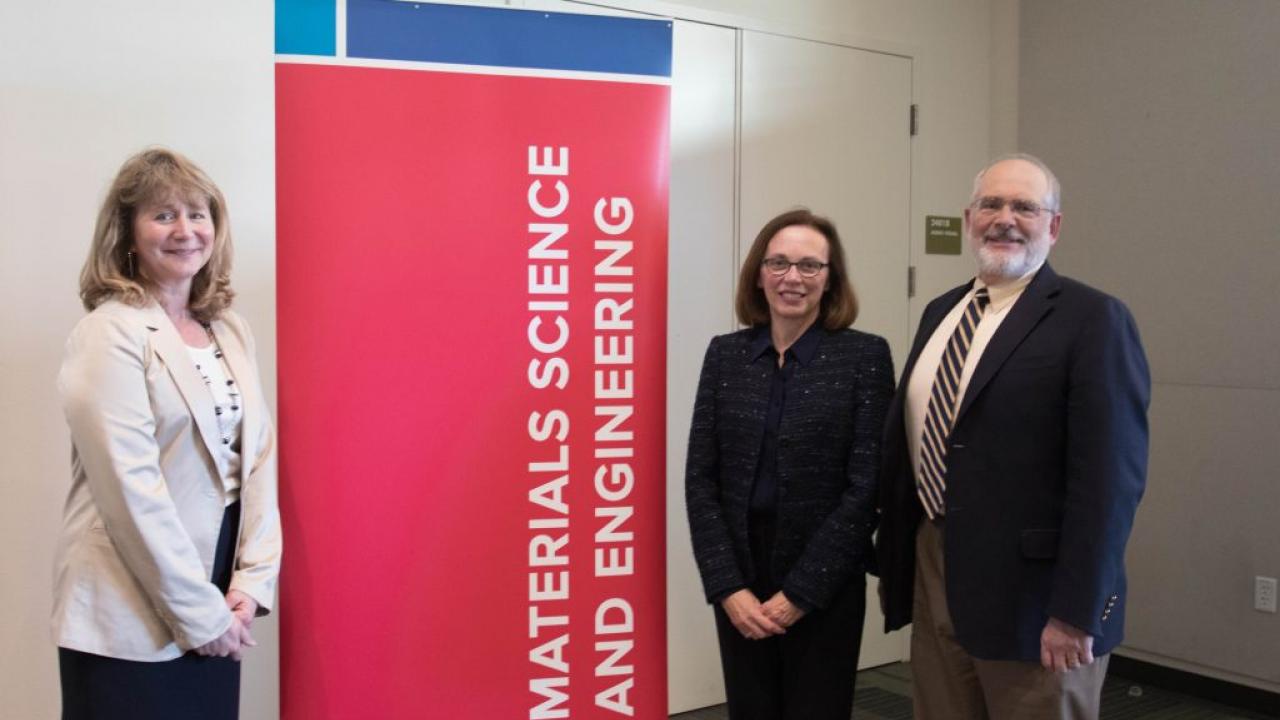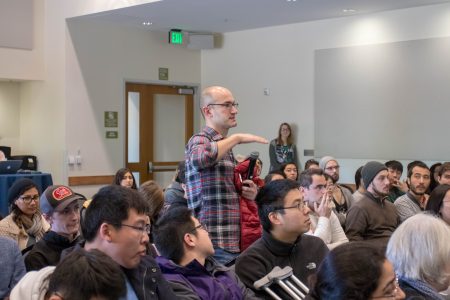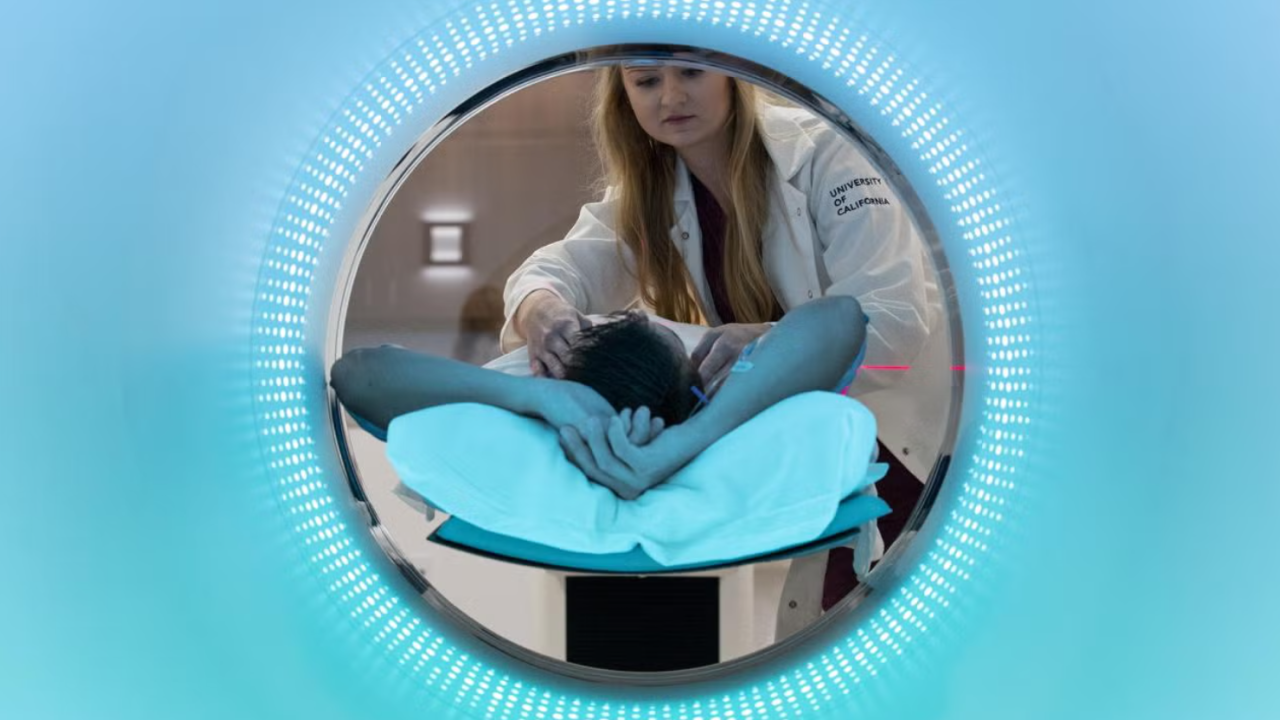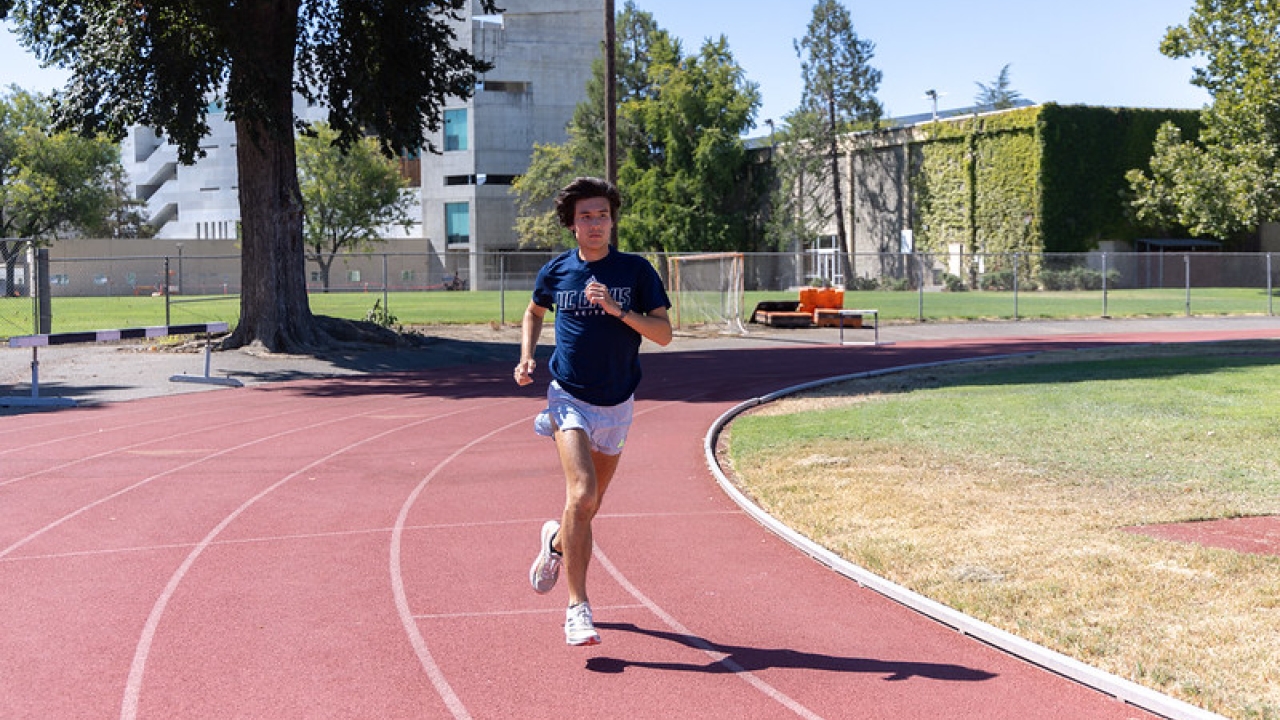
Caltech’s Katherine T. Faber Discusses the (W)hole Truth about Porous Materials
Earlier this quarter, Katherine Faber, the Simon Ramo Professor of Materials Science at the California Institute of Technology, delivered the College of Engineering’s Winter Distinguished Lecture to students, staff and faculty in the Student Community Center.
Her talk, titled “Probing Pore Space: Crafting Porous Ceramics for Applications from Medicine to Sustainability,” focused on the role of porous materials in a wide range of applications from bone scaffolds to fuel cells and batteries.
A pore within a ceramic material is a double-edged sword: it can act as a flaw and reduce the overall strength of the material, which is why researchers have spent several decades trying to eliminate them from materials. However, Faber noted, scientists have shown that pores also enable certain functionality due to their high surface area and connectivity.
“I grew up in this discipline in which we did everything we could to get pores out of these materials and create pore-free ceramics because the strength of these materials is inversely proportional to the size of the pore,” said Faber. “However, years later, we realized that porous materials allow us to look at a whole new body of applications.”
Indeed, these pore networks can be tuned to adjust the size and distribution of pores for catalyst supports, microfiltration systems, bone scaffolds, thermal management systems, fuel cells and batteries.

Faber reviewed the various methods for controlling pore networks, including freeze casting, suspension and solution processing. She also discussed how various properties of porous materials could be optimized, such as surface area, permeability and compressive strength.
Lastly, she focused on efforts to recognize the practical strength and toughness limits of porous materials by understanding how networks form and their microstructure.
“It’s not just a matter of saying I want a specific percentage of porosity,” Faber concluded. “It’s as much about designing the pore network as it is about designing the material.”
Photos of Dr. Faber’s Distinguished Lecture are available online.




